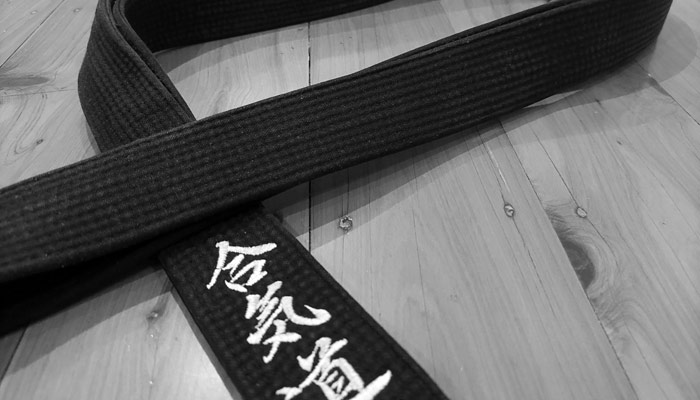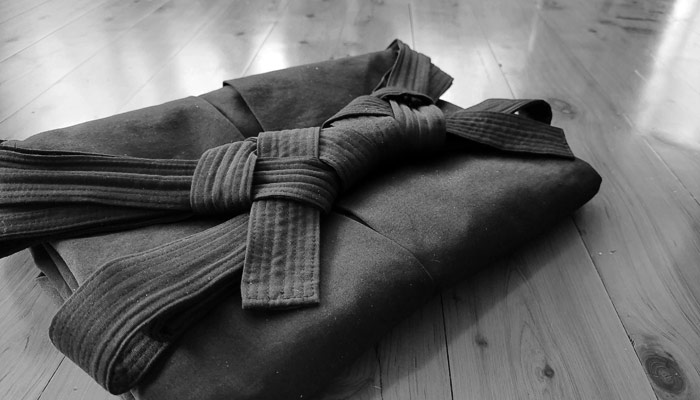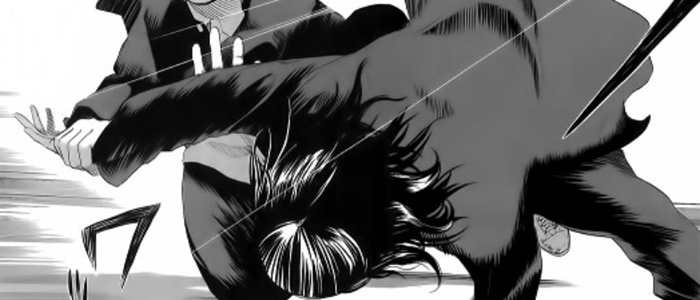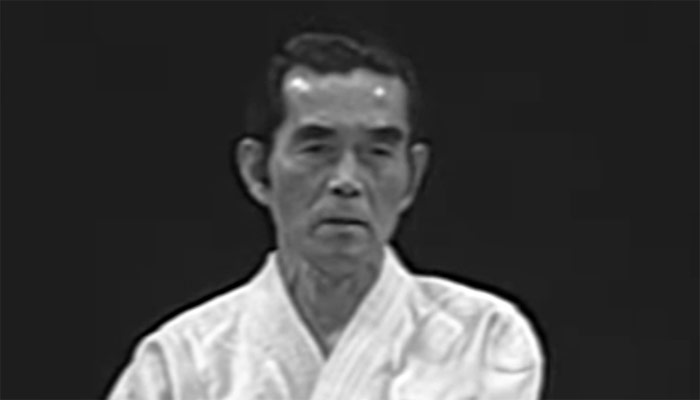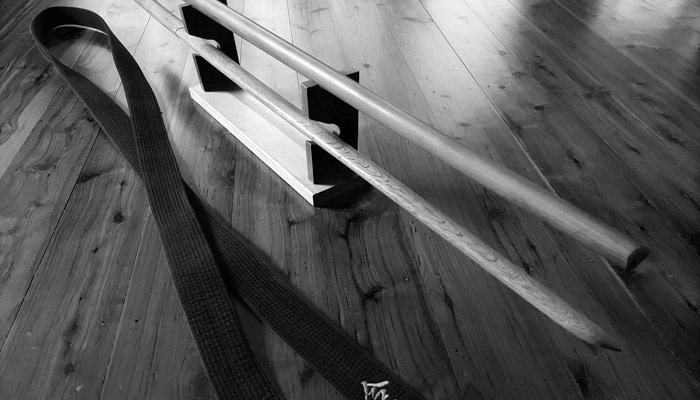-
Development of Dan Ranking System in Japanese Martial Arts and its Adoption in Aikido
Martial arts have been an integral part of Japanese culture for centuries. One of the most significant aspects in their development is the introduction of the dan ranking system. The term “dan” 段, which literally means “stage”, was first used by Sansa Honinbo 本因坊 算砂, the founder of the Honinbo Go school in the late 16th century. Go 囲碁 is a traditional strategy board game originated from China and introduced to Japan around the 7th century. The game is played by two players who take turns placing black and white stones on a square grid board. The objective is to gain more territory on the board than your opponent by…
-
The Story Behind Aikido’s Traditional Attire: Hakama
A hakama 袴 is a traditional Japanese garment that has been worn in Japan for centuries. Originally, it was worn by nobles, court officials, and samurai warriors as a symbol of their status and rank. It naturally became the standard outfit for those who practice kobudo 古武道, including the samurai. Today, practitioners of these old arts, as well as modern arts such as aikido 合氣道, iaido 居合道, or kyudo 弓道, continue the tradition of wearing hakama during training. However, some arts have discarded this tradition due to various reasons such as practical reasons in judo 柔道 or origin/religious reasons in shorinji kempo 少林寺拳法. The history of the hakama in aikido…
-
The Rare Beauty of Aikido in Japanese Manga
The popularity of Japanese manga, or comics, has surged globally, largely due to their distinct storytelling, art style, and cultural significance. One popular genre of manga is martial arts, which spotlights the art of combat and various fighting styles. Numerous manga series have been created based on different martial arts, such as Karate, Judo, Kendo, Sumo, Kung Fu, Boxing and MMA. However, manga with Aikido as their primary storyline is rare. Evil Heart is one of the few popular Aikido manga series. It is a drama telling the story of Masaki Umeo, a high schooler with a bad temper who encounters an English teacher from Canada, who is also an…
-
Breaking Barriers: The Pioneering Women of Aikido
Japan has a rich history of women practicing martial arts. Women of the samurai class learned naginatajutsu as part of their education and self-defense training since the Edo period (1603-1867). There are also records of women practicing kenjutsu, ko-tachi 小太刀, kusarigama 锁镰, and other weapon arts, but taijutsu was relatively uncommon. However, the situation began to change in the early 1900s when martial arts such as Judo became a regular part of school curriculums. In 1919, Ueshiba met Onisaburo Deguchi 出口王仁三郎, the founder of the Omoto 大本教 religion in Ayabe 府綾 Kyoto. The following year, Ueshiba moved his family to Ayabe and joined Omoto. Deguchi encouraged Ueshiba to pursue budo…
-
Morihei Ueshiba’s Path from Kenjutsu to Aiki-Ken (Part II)
In 1927, Ueshiba moved to Tokyo and later started teaching in Kobukan 皇武館 dojo. Through his military connections, Ueshiba was later introduced to some of the top martial artists. Among them was Kosaburo Gejo 下条小三郎, a navy commander but also an expert in Yagyu Shinkage Ryu. Gejo was a top student of Yagyu 柳生厳周, the 13th generation head of the Owari Yagyu 尾張柳生 lineage. While Ueshiba and Gejo had more of a friendly relationship rather than a formal teacher/student one, it is generally believed that Ueshiba was exposed to some high level of Yagyu Shinkage Ryu techniques and concepts through this relationship. However, there is also a saying that Gejo…
-
Morihei Ueshiba’s Path from Kenjutsu to Aiki-Ken (Part I)
The origin of Aiki-ken can be traced back to Morihei Ueshiba, the founder of Aikido, and his study of various martial arts styles throughout his life. Some of the major ken-related arts that Ueshiba had exposure to include Yagyu Shinkage Ryu 柳生新陰流, Yagyu Shingan Ryu 柳生心眼流, Daito Ryu 大東流, and Kashima Shinto Ryu 鹿島新当流. In 1902, when Ueshiba was 19, he moved to Tokyo to start a stationery business but returned to Tanabe in less than a year due to a health problem. It was during this short period of time that he trained in Yagyu Shinkage Ryu, but it is unclear who his teacher was. Yagyu Shinkage Ryu was…
-
Sunadomari – His Kokyu Power and The Spirit of Aikido
Kanshu Sunadomari 砂泊諴秀 was a prominent figure in the development of Aikido. He was a direct student of Ueshiba and trained with him for many years. Born in Kagoshima Prefecture 鹿児島県 in 1923, Sunadomari was exposed to Aikido as a child as his older brother, Kanemoto Sunadomari 砂泊兼基, was also a student of Ueshiba. His older sister, Fukiko Sunadomari 砂泊扶妃子 (光恵 Mitsu), later joined as well. The first biography of Morihei Ueshiba entitled Aikido Kaiso Morihei Ueshiba was published by Kanemoto Sunadomari in 1969, with his sister Mitsu deeply involved. In 1942, at the age of 19, Sunadomari began his aikido training as an uchi deshi 直弟子 (live-in student) of…
-
Bokuto or Bokken: The Difference and Historical Significance of “To” and “Ken” in Japanese Martial Arts
Bokuto 木刀 and bokken 木剣 are often used interchangeably (both being translated as “wooden sword”). However, “To” 刀 and “Ken” 剣 are different. First of all, the two kanji characters are not native Japanese words, but came from China. Therefore, the difference between them is better understood from the Chinese perspective. A 刀 is a single-edged weapon with a blade on only one side, primarily used for cutting, and often has a curved shape. On the other hand, a 剣 is a straight, double-edged weapon with blades on both sides and primarily used for piercing. Historically speaking, the use of 刀剣 (as a comprehensive term) in China can be traced…
-
Kotodama: The Spiritual Power of Words in Japanese Culture and Aikido
Kotodama 言霊 is closely connected with the life and teachings of Morihei Ueshiba, the founder of Aikido. Ueshiba was a deeply spiritual person who drew inspiration from the religious and philosophical traditions of Shinto 神道. Kotodama is a fundamental aspect of Shinto, an indigenous religion of Japan that has been integrated into various Japanese arts and practices, such as martial arts, traditional medicine, and music. Koto 言 means “word,” and dama 霊 means “spirit.” The term can be translated as “the spirit of words.” In kotodama practice, it is believed that each word and sound vibration has its own unique spiritual energy and power. One of the key principles of…
-
Randori – The Art of “Taking Control in Chaos”
Randori 乱取り is a training exercise that is practiced in many Japanese martial arts, including Aikido. The first character, 乱, means “disorder” or “chaos,” and 取り means “taking” or “capturing.” Together, the term randori can be interpreted as “taking control in chaos”. Randori is a training exercise where a practitioner faces multiple attackers in a dynamic and unpredictable setting. This is different from a pre-set series of attack and defense techniques such as kumite 組手 in Karate or kumijo 組杖 in Aikido, which are normally performed for demonstration purposes. Randori can be further divided into hitori gake 一人掛け (one-person attack), futari gake 二人掛け (two-person attack), sannin gake 三人掛け (three-person attack),…
